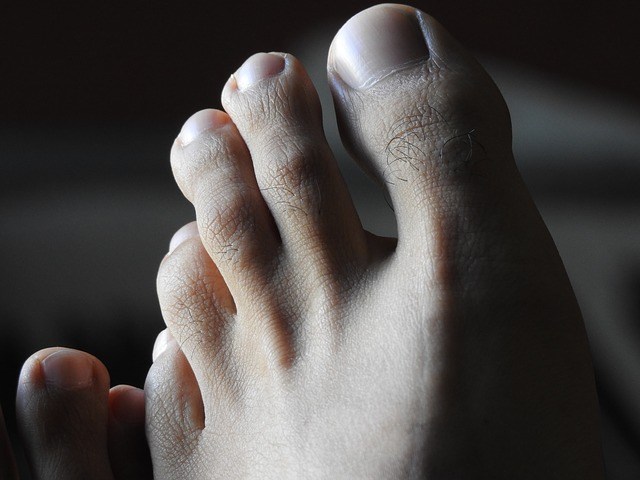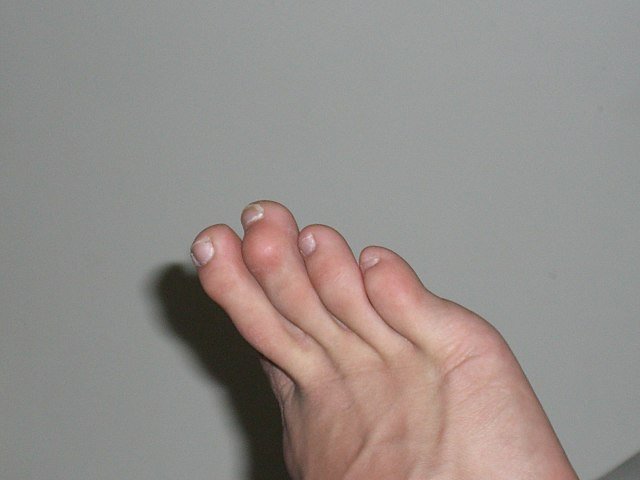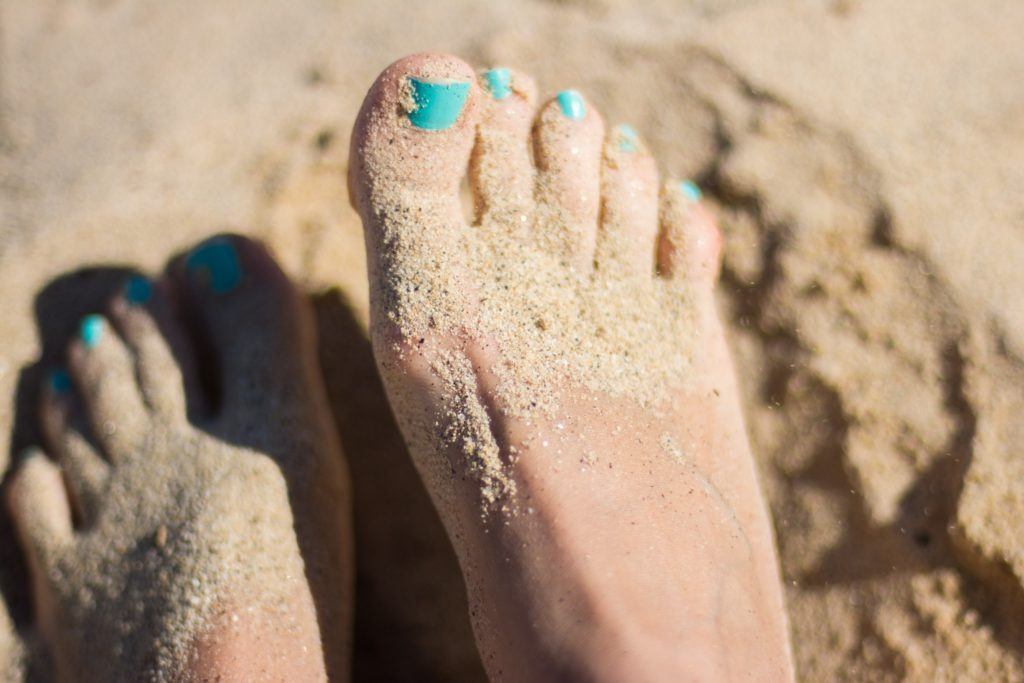Experiencing pain in your foot? Do you have a misshapen toe? Don’t jump on the worst possible diagnosis just yet!
This quick and simple explanation will help you decide if you really have hammertoe, and what you can do about it.

Contents
What is Hammertoe Deformity?
Hammertoe, and its sister condition ‘mallet toe,’ are deformities of the joints and ligaments in the foot. Most often, hammertoe looks like a misshapen toe that seems perpetually cramped or bent.
This condition affects the middle joints of each toe and is most often seen on your three middle toes.
How can you identify a true case of hammertoe?
Hammertoe Symptoms
This is far more than a stubbed toe. A hammertoe deformity advances over time in the joints of the toe, and without treatment, the condition can become permanent.
Moreover, the deformity can become increasingly uncomfortable and even painful.
Early hammertoe symptoms include irritation on and around the affected toe, as well as the development of calluses – which, without treatment, can eventually become sores as the misshapen toe continuously rubs against the inside of one’s shoes.
As the condition gets worse, hammertoe can make it impossible to walk without pain. At its worst, a hammertoe deformity can even make it painful, if not impossible, to stretch the affected toe at all.
Causes of Hammertoe
What brings on such an uncomfortable condition? Hammertoe can develop for any number of reasons. The simplest can be a high arch of the foot combined with inefficient footwear.
High arches themselves can cause discomfort even in the most accommodating of shoes. However, continuous use of shoes that do not support a unique foot shape can cause the ligaments in the toe to begin deteriorating.
Hammertoe deformities can also develop because of a prior injury or a preexisting condition, such as a bunion or naturally curved toe. Misalignment of the toes can worsen over time, or even cause hammertoe to develop on neighboring toes.
Arthritis is another typical condition that may contribute to the development of hammertoe symptoms. Arthritic joints are already weakened and are more prone to issues caused by any of the above complications.

The full diagnosis of hammertoe will most likely require a trip to the doctor. The doctor will want to know if your family has a history of hammertoe deformities or any related physical conditions, as well as what kind of symptoms you’ve already experienced.
They’ll want to test the flexibility of the toe, and as the condition progresses, an x-ray may be necessary to fully assess the damage.
Hammertoe symptoms are more prevalent in people with arthritis and diabetes, in women, and they become more likely the older you get.
If any or all of these warnings apply to you, don’t worry! There’s plenty you can do to keep this condition at bay.
How to Treat Hammertoe
As with any physical condition that leaves you in pain, or even puts you out of commission entirely, you’ll want to be sure you treat possible instances of hammertoe as soon as possible.
Treatments: From Home to the Hospital
If caught early on, a hammertoe deformity can be treated by simply changing your footwear.
With instances caused by high arches or bunions, wearing more comfortable shoes that better accommodate unique foot shapes can mitigate the worst hammertoe symptoms.
Insoles or cushions can be a big help in keeping toes aligned and comfortable.
Hammertoe can cause the affected toe to develop calluses, blisters, or sores. It’s important to treat these with all due care. Keep the area clean and use over-the-counter anti-inflammatory medicines to relieve soreness, as well as creams to reduce itching and prevent infection.
The final sign of severe hammertoe is the inability to move the toe normally. Comfortable stretches combined with the above treatments may help prevent the condition from becoming permanent.
Once the toe is completely immobile, the only way to treat severe hammertoe is surgery to correct the shape, as well as release pressure on the ligaments.
The worst thing you can do is continue to avoid treatment if you recognize the symptoms of hammertoe. Not only can the condition develop so much that surgery is the only option, but going without care beyond that point will leave you open to the possibility of more toes being affected.

Prevention
How can you avoid this uncomfortable condition altogether? Easy: wear good shoes!
The worst symptoms of hammertoe can be avoided by simply wearing shoes that are comfortable and accommodate your foot’s shape and size.
Be sure your shoes leave room for your toes to move around, both in the length and width of the shoe.
If you do a lot of walking, the best thing you can do is to avoid wearing extremely high heels or shoes with tight, pointed toes for long periods of time. These can cause and exacerbate misshapen toes, making a hammertoe deformity more likely by the day.
Tight shoes can also reduce circulation to the toes, which contributes to the development of hammertoe, especially as you get older.
Stay smart, stay comfortable, and stay free of hammertoe!
Here’s a video showing more information on hammertoes.
Do you have experience dealing with a hammertoe deformity?

